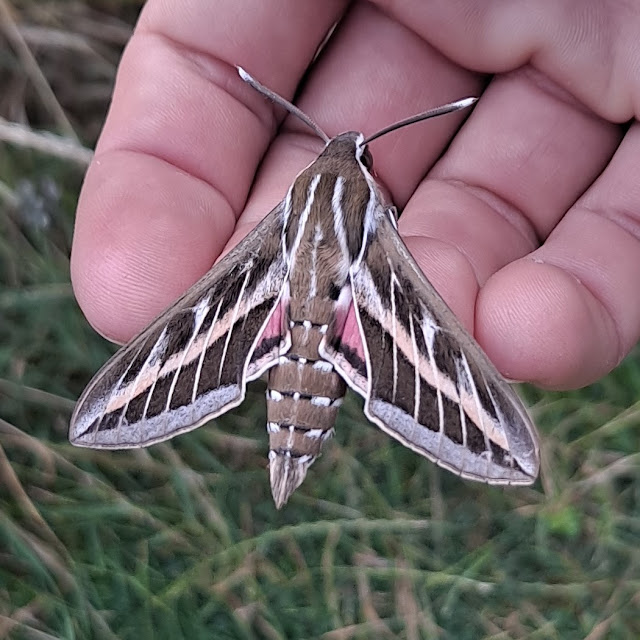It was really hot to start the week with 32.1° recorded on the 18th, one of the highest ever recorded temperatures on the island. The temperature dropped to around 20° for the rest of the week. The wind picked up on the 24th with 32mph gusts recorded. The island finally had some rain, although this was still not consistent or heavy enough to sort some of our water shortage issues.
The
BioBlitz finished on Tuesday and we wanted to thank again all the amazing
experts that come over from The Porcupine Marine Natural History Society, The
Marine Biological Association, The Blue Marine Foundation, MARINElife, Sea
Watch Foundation and The Natural History Museum. An approximate 250 species
were recorded within the Marine Protected Area some of which were new for the
island.
The avian interest on the island is starting to change with the beginning of autumn migration. A Cuckoo was seen on the 21st and Swifts are still occasionally recorded flying through. A few waders were seen this week. After a brief downpour during the morning census on the 22nd a summer plumage Golden Plover landed and was feeding on the Airstrip. A Common Sandpiper was seen around Rat Island on the 21st and 22nd.
 |
| Golden Plover, Airstrip © Zach Wait |
Strong westerly winds on the 24th brought seabirds closer to the island. A short seawatch from the Castle in the early evening produced 300+ Manx Shearwaters, 60 Gannets, a Cormorant and a Balearic Shearwater.
A Grey Heron
was recorded flying over the Castle on the evening of the 20th. A Little Egret
was also seen around the Castles area on the 22nd.
 |
| Little Egret, Castle © Chris Blackmore |
A few Sand Martin have started to head south with two over Quarter Wall Pond on the 18th and seven around the north end of the island on the 22nd. Also on the 22nd a total of 23 Swallows were counted.
The low cloud and northerly winds overnight and on the morning of the 20th were the perfect conditions for a large arrival of migrating warblers. Young Willow Warblers were seen all across the island including on walls and in Bracken and Gorse. A total of 22 were counted during the morning census with new birds arriving throughout the day. Also on the 20th there were seven Chiffchaffs, a Grasshopper Warbler, Sedge Warbler and a Blackcap. Some migration continued the next day with at least six Willow Warblers seen as well as a Whitethroat and another young Blackcap. A Whitethroat was also seen on the 24th.
The mist nets were set-up in Millcombe this week and two sessions were run by Assistant Warden Stuart Cossey. Few migrants were caught but it was good to ring a few of the new island fledglings including Wrens, Robins and Blackbirds. A Sedge Warbler and Willow Warbler were ringed both on their way back to Africa for the winter.
 |
| Sedge Warbler © Stuart Cossey |
Post-breeding flocks of Meadow Pipit and Linnet are starting to form on the island with a high count of 50 Linnet in one flock.
The highlight
of the moth trap this week was a Striped Hawk-moth on the22nd which is the
first time this species has been trapped on the island. Other interesting moths
included the first island record of Dotted Clay and the first Oak Eggars of the
year.
 |
| Striped Hawk-moth © Stuart Cossey |
 |
| Oak Eggar © Tara McEvoy-Wilding |
How do you manage to get everything to land on your hand, and then stay there ?
ReplyDelete